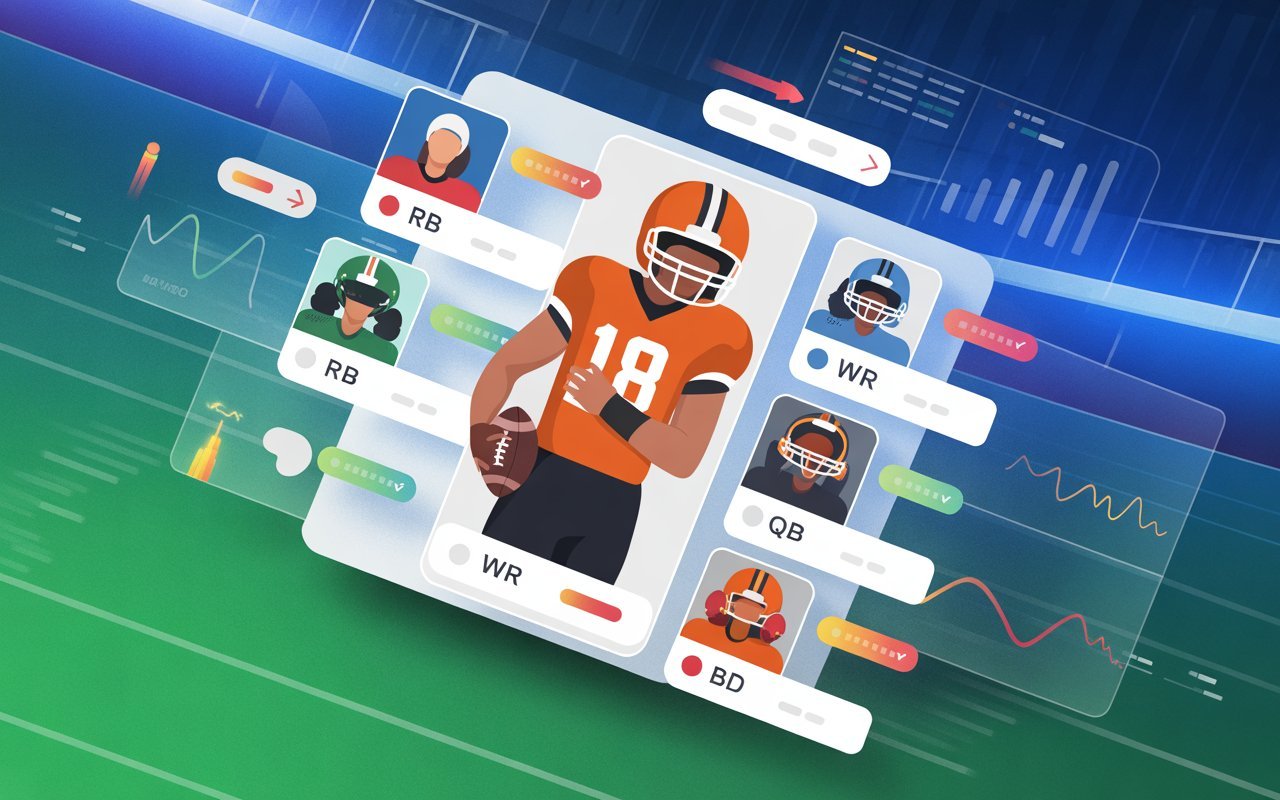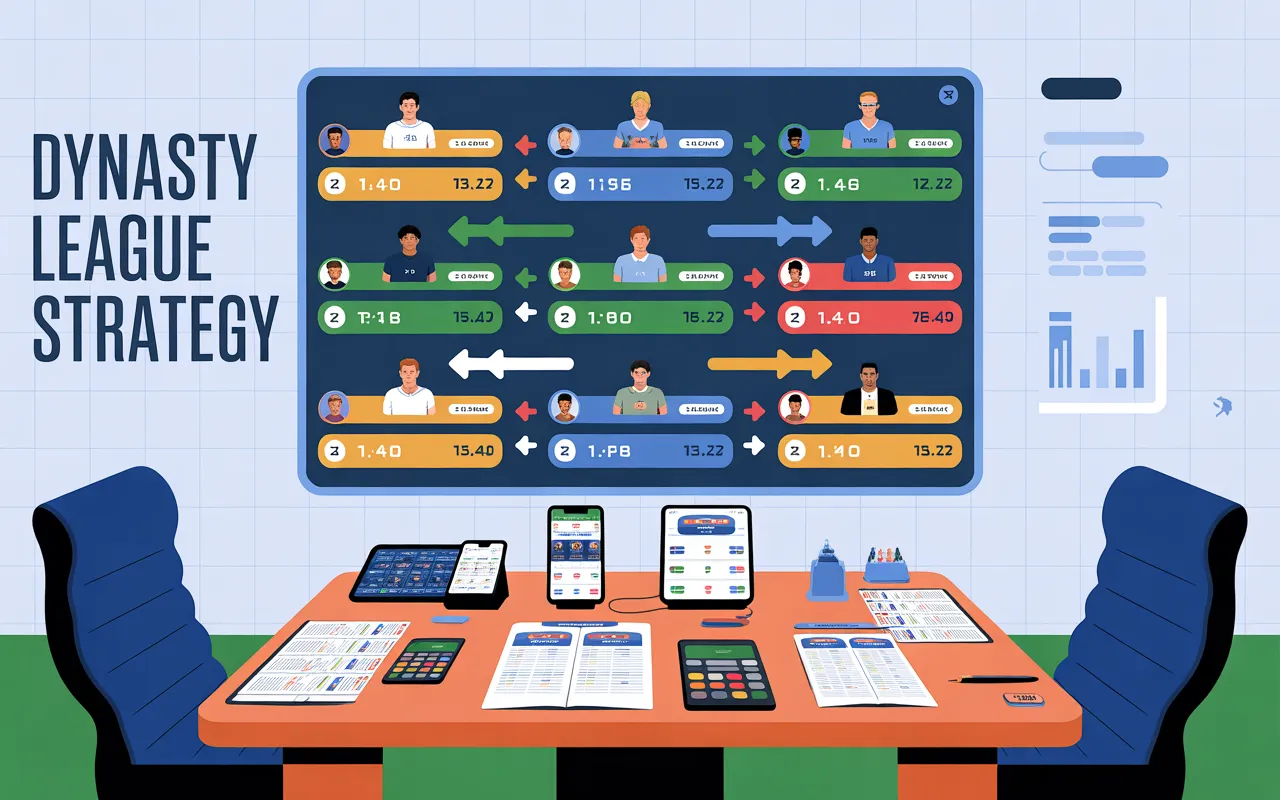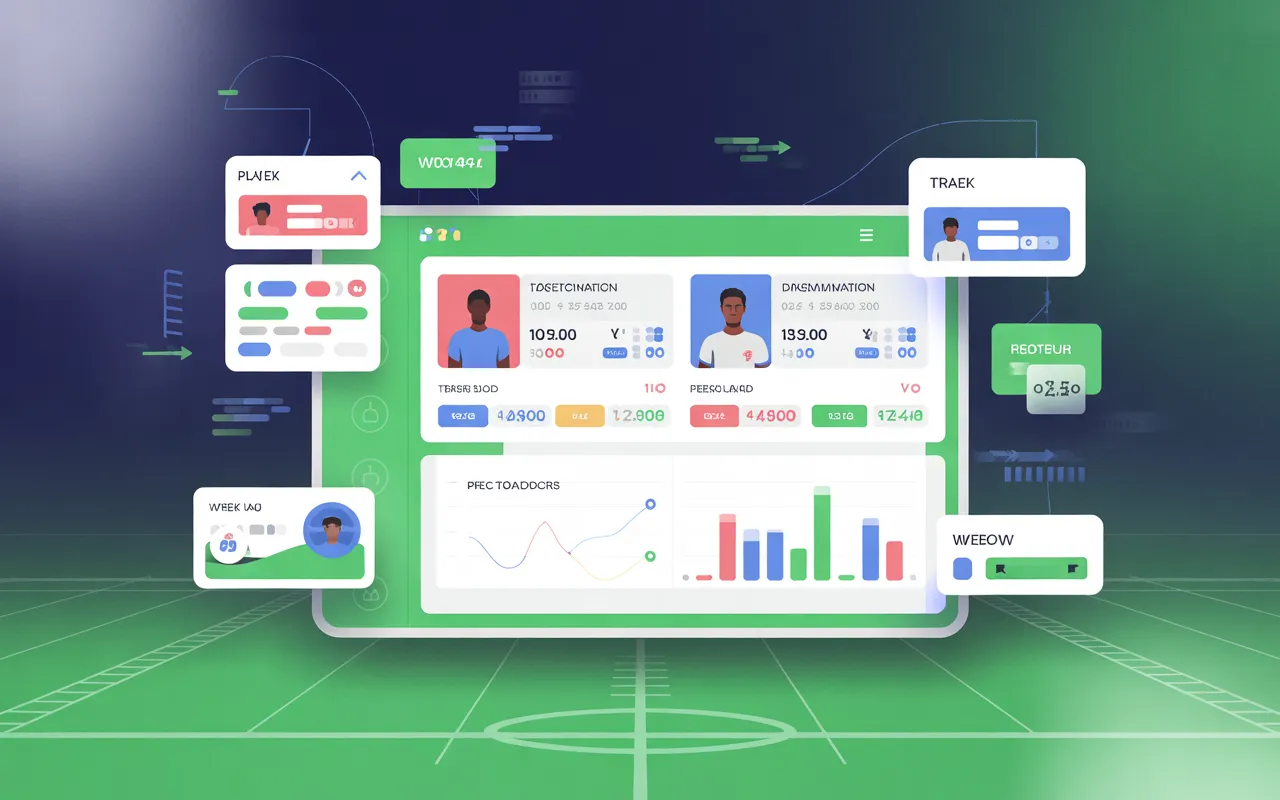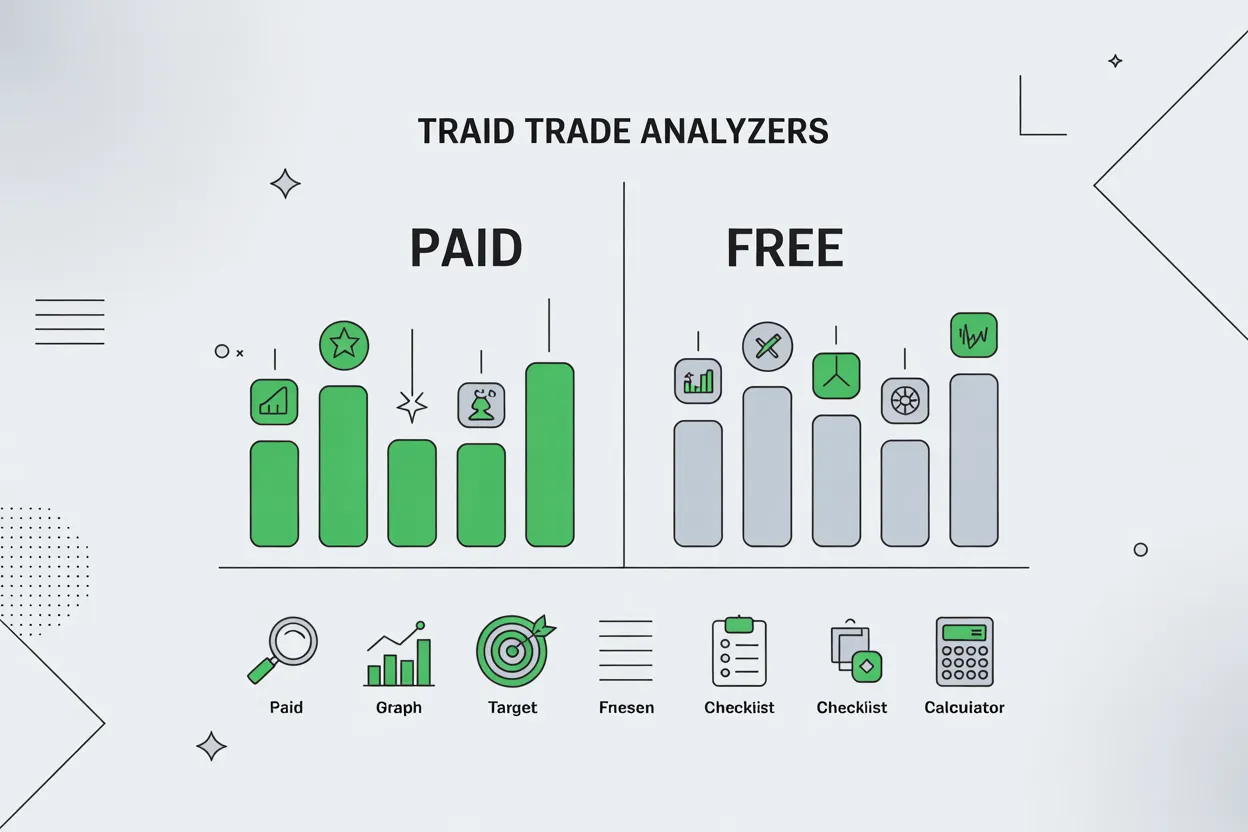Every fantasy football season brings the same dilemma should you build your lineup around running backs (RBs) or wide receivers (WRs)? According to ESPN data, 67% of championship teams in 2024 drafted their core starters based on positional value rather than overall rank. Yet, most managers still struggle to compare an RB and WR fairly. That’s where understanding a Fantasy Player Comparison RB vs WR can give you an edge.
In 2025, small lineup decisions like flexing an RB instead of a WR can swing weekly matchups. You need to know who offers more upside, which stats matter most, and how to account for your league’s scoring system. In this guide, we’ll break down expert insights, data-backed angles, and actionable tips to help you dominate your league.
👉 Use the Fantasy Trade Analyzers tool to compare players instantly and gain a real-time trade advantage.
1. Understand the Scoring System Sensitivity
Every fantasy format changes the RB vs WR dynamic. PPR scoring, half-PPR, and standard leagues all shift player value differently. Many ranking tools overlook this; they offer one leader board without showing how much a player’s rank swings between formats.
Pro Tip:
- In PPR leagues, receivers gain +1 point per catch, boosting possession WRs like Keenan Allen.
- In standard leagues, touchdown-heavy RBs (like Derrick Henry) climb the charts.
- Analyze scoring sensitivity to find hidden value.
Unique Edge:
Create or use a value-sensitivity chart that shows how each player’s fantasy points change across formats. Tools like Fantasy Trade Analyzers already factor in these adjustments so you can quickly see which position gains the edge under your league rules.
2. Factor in Volatility and Reliability Metrics
Most managers chase average projections, not realizing that consistency wins leagues. A WR might explode one week and vanish the next while a steady RB delivers solid production every game.
What to Track:
- Weekly variance: the standard deviation of fantasy points per week.
- Top-X finish rate: how often a player finishes as a top-12 RB or WR.
- Usage stability: how predictable targets or carries are.
Why It Matters:
RBs with high workload security (like Christian McCaffrey) provide reliable floor points, while WRs offer more explosive ceiling plays. A good Fantasy Player Comparison RB vs WR should show volatility scores so you can decide based on your risk appetite.
👉 Check player volatility in your league now using the Fantasy Trade Analyzers comparison tool.
3. Measure Expected Fantasy Points (xFP)
Raw stats don’t tell the full story. What really predicts future fantasy value is expected fantasy points (xFP) , a metric combining snap share, goal-line usage, targets, and play-calling context.
For Example:
A WR with 10 red-zone targets but only 2 TDs has higher expected value than one with 3 TDs on 4 red-zone targets. The first player is simply underperforming luck wise.
Unique Angle:
Integrate xFP into your Fantasy Player Comparison RB vs WR strategy. By tracking opportunity shares and expected TDs, you’ll spot breakout players before others do. FantasyPros and FantasyAlarm highlight parts of this, but Fantasy Trade Analyzers delivers the complete, actionable view.
4. Compare FLEX Trade-Off Decisions Intelligently
One of the hardest weekly calls? RB or WR in your FLEX slot. Traditional fantasy calculators or start/sit tools only give static recommendations they don’t show how much better one option is versus another in expected points.
Example:
If an RB projects for 13.8 points and a WR for 13.4, you might think it’s a toss-up. But if the RB’s opponent has a top-5 rush defense and the WR faces a bottom-10 secondary, that 0.4-point gap flips easily.
Unique Angle:
Use a FLEX decision calculator that combines matchup difficulty, opponent defensive rankings, and weather factors to give a confidence range. You can test this feature inside Fantasy Trade Analyzers just input your league settings and compare players head-to-head.
5. Don’t Ignore Injury Risk & Workload Sustainability
Injury probability is a hidden stat that often decides seasons. RBs take more hits; WRs depend on speed and agility. Yet most fantasy platforms don’t adjust projections for injury or workload sustainability.
Look for:
- Total touches per season (RBs with 300+ touches = red flag).
- Age curve (WRs usually peak around age 26–28).
- Offensive line ranking better protection extends player life.
Unique Edge:
Assign each player a durability index. Combine it with opportunity share and role. This shows you who can sustain elite performance deep into the season. You can track this inside Fantasy Trade Analyzers, where durability metrics help evaluate trade safety.
6. Understand Dynasty and Keeper League Context
Your strategy shifts drastically in dynasty leagues or keeper leagues. RBs tend to decline faster, while WRs maintain value longer. Yet most ranking sites focus on short-term projections only.
Example: In 2025, Bijan Robinson’s dynasty value far exceeds an aging RB like Joe Mixon, even if Mixon’s redraft points are similar.
Pro Tip:
Use dual-mode rankings “Redraft / Dynasty / Keeper” to visualize future trade value. The Fantasy Trade Analyzers platform supports this view, letting you plan ahead for future seasons.
7. Demand Transparency in Projections
Would you trust a projection system that never shows its accuracy? Many fantasy tools hide model confidence and historical error rates.
Unique Angle:
Add confidence intervals and show how your source performed historically (mean absolute error, hit rate, etc.). Transparency builds trust and users who can compare “projection accuracy” make better trade and lineup calls.
👉 Always check if your source provides transparent model data. You’ll find full transparency with Fantasy Trade Analyzers.
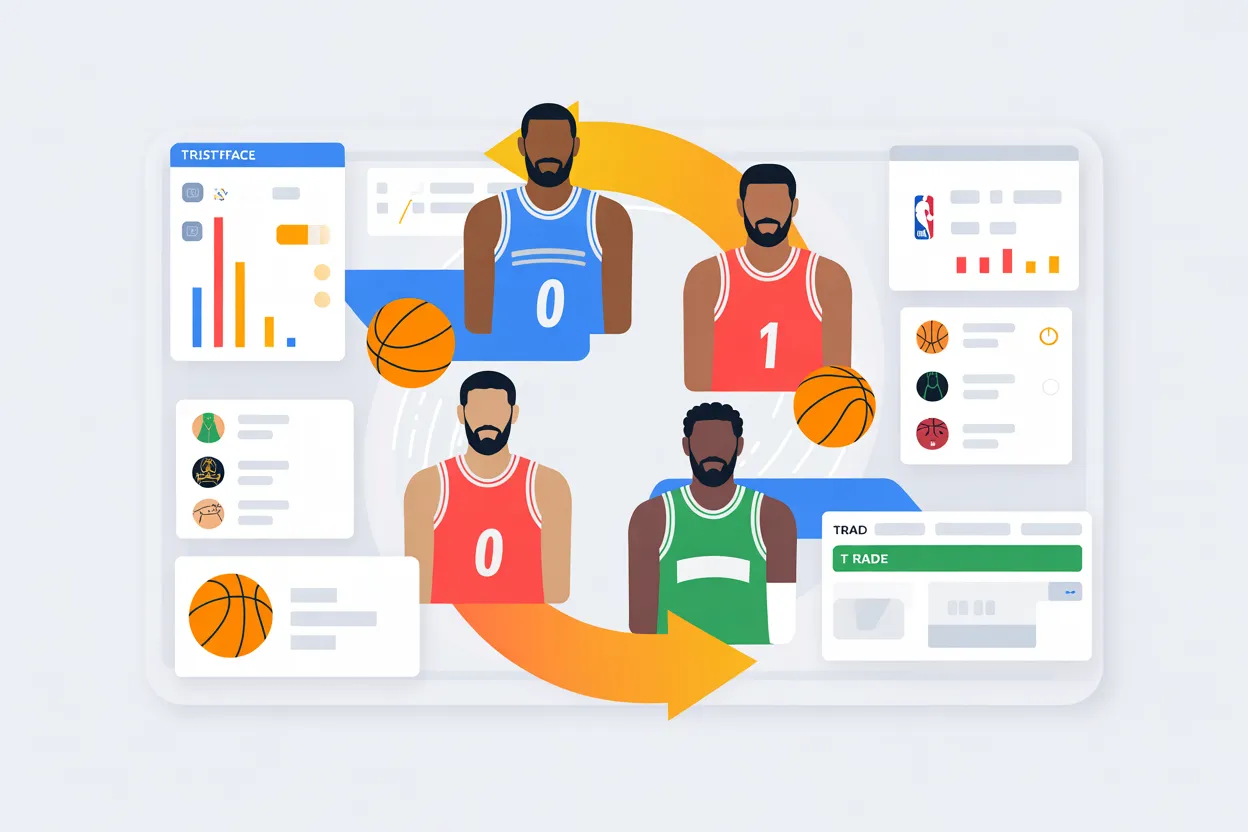
8. Use Matchup Adjusted Season Projections
A player’s future success depends heavily on schedule difficulty. A WR facing the Jets twice will project differently than one with two games vs. Arizona.
Key Metrics:
- Opponent pass/rush-defense rank
- Fantasy points allowed per position
- Weather + game script impact
Example:
An RB may look great season-long but face three top-5 rush defenses in the playoffs that’s a red flag.
Pro Tip:
Use rest-of-season matchup adjustments to fine-tune projections. Tools like Fantasy Trade Analyzers factor these automatically, saving you hours of manual data crunching.
9. Ask “Why” Behind Every Rank
Numbers alone don’t win championships. You need clear, human-readable reasons behind every ranking. Most comparison sites miss this.
Unique Angle:
Show three short, data-backed reasons for each player’s rank:
- Usage trend (targets or carries)
- Matchup strength
- Role or injury updates
Example:
“Stefon Diggs ranked WR6 25% target share, favorable upcoming schedule, consistent red-zone role.” That’s clarity. And it’s what Fantasy Trade Analyzers delivers inside every comparison summary.
10. Prepare for “What-If” Scenarios
Injuries and trades reshape fantasy value overnight. Imagine your RB1’s backup suddenly becomes the starter the value swing can win your league.
Unique Angle:
Use a scenario simulator:
- “What if this RB gets injured?”
- “What if a QB change impacts WR targets?”
- “What if the team’s offensive style shifts?”
Planning for what-ifs keeps you ahead of your league mates. You can model these scenarios right inside Fantasy Trade Analyzers, using real-time projections.
My Personal Experience / Case Study
Last season, I benched a WR for an RB purely based on total points big mistake. My WR had higher expected fantasy points (xFP) and a favorable PPR scoring advantage. I lost that week by 3 points. That’s when I realized comparing positions without context is a trap.
Since then, I’ve been using the Fantasy Trade Analyzers comparison tool. Its data-driven metrics, like volatility index and scoring-sensitivity table, changed how I make start/sit calls. I even pulled off a midseason trade using its valuation guide that pushed me into the playoffs.
Lesson learned: always compare RB vs WR within your specific league settings, not generic ranks.
Expert Quote
Matthew Berry, NBC Sports Fantasy Analyst says:
“Fantasy football is a probability game, not a popularity contest. Managers who analyze positional volatility win more leagues.”
Real Example
Fantasy manager Josh M. from Texas used Fantasy Trade Analyzers to decide between starting Deebo Samuel or Rhamondre Stevenson in Week 10. The tool projected Deebo’s higher expected fantasy points due to matchup advantage.
Result: Josh won his matchup by 5.2 points securing his playoff spot.
Stat to Know
According to FantasyPros, WRs outscore RBs in PPR formats by an average of 13.8% over the last five years but RBs maintain higher trade value due to positional scarcity. That makes RB vs WR comparison essential for every draft or trade decision.
FAQs
- What is a Fantasy Player Comparison RB vs WR?
It’s a detailed evaluation that compares a running back’s and a wide receiver’s fantasy potential based on stats, usage, and scoring format. It helps managers make smarter lineup or trade decisions. - Who scores more in fantasy RBs or WRs?
It depends on your league format. In PPR scoring, WRs often score more due to receptions. In standard leagues, touchdown-heavy RBs usually lead. Always check using tools like Fantasy Trade Analyzers. - Why should I use Fantasy Trade Analyzers instead of others?
Because it combines expected fantasy points, matchup data, and trade value algorithms in one place. You get transparent, real-time analysis that other fantasy tools lack. - How can I compare players by stats quickly?
Use a player comparison engine like Fantasy Trade Analyzers. It offers side-by-side stats, projections, and trade values for both RBs and WRs. - What’s the best strategy for RB vs WR draft picks in 2025?
Focus on positional scarcity early RBs are fewer but high impact. Then balance with high-volume WRs who thrive in PPR leagues for a winning mix.
Conclusion
Winning fantasy football in 2025 isn’t just about picking stars it’s about comparing positions with precision. By analyzing volatility, usage, matchups, and expected fantasy points, you’ll always stay ahead. Bookmark this guide, explore more draft strategy tips, and start making smarter lineup decisions today.
👉 Try our free Fantasy Trade Analyzers tool today and get instant trade insights.


